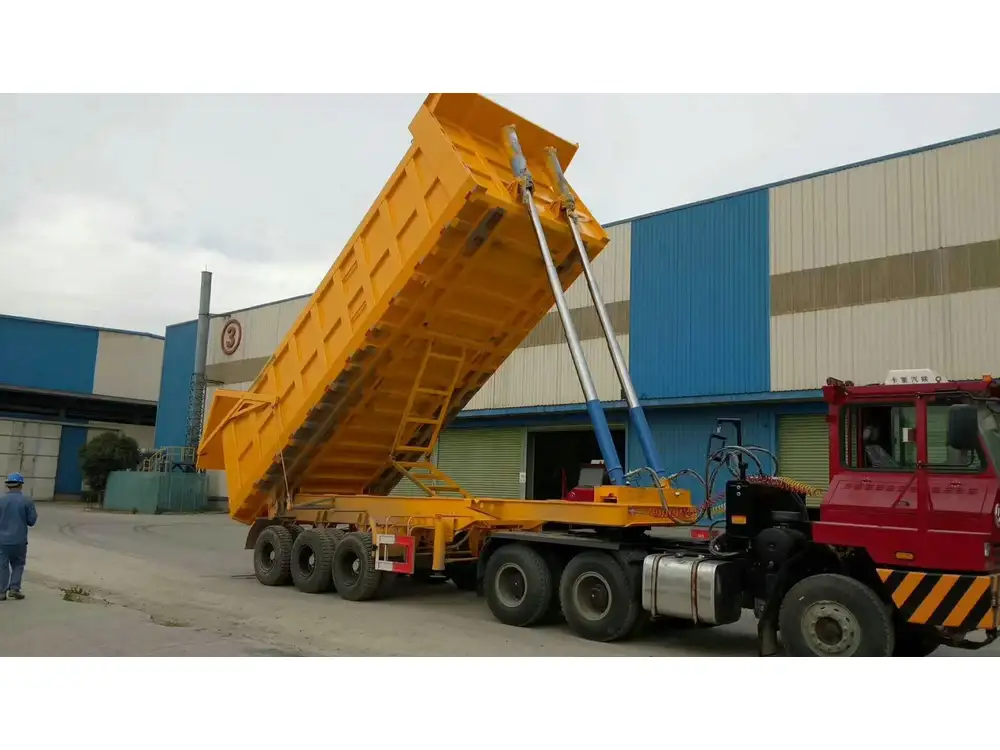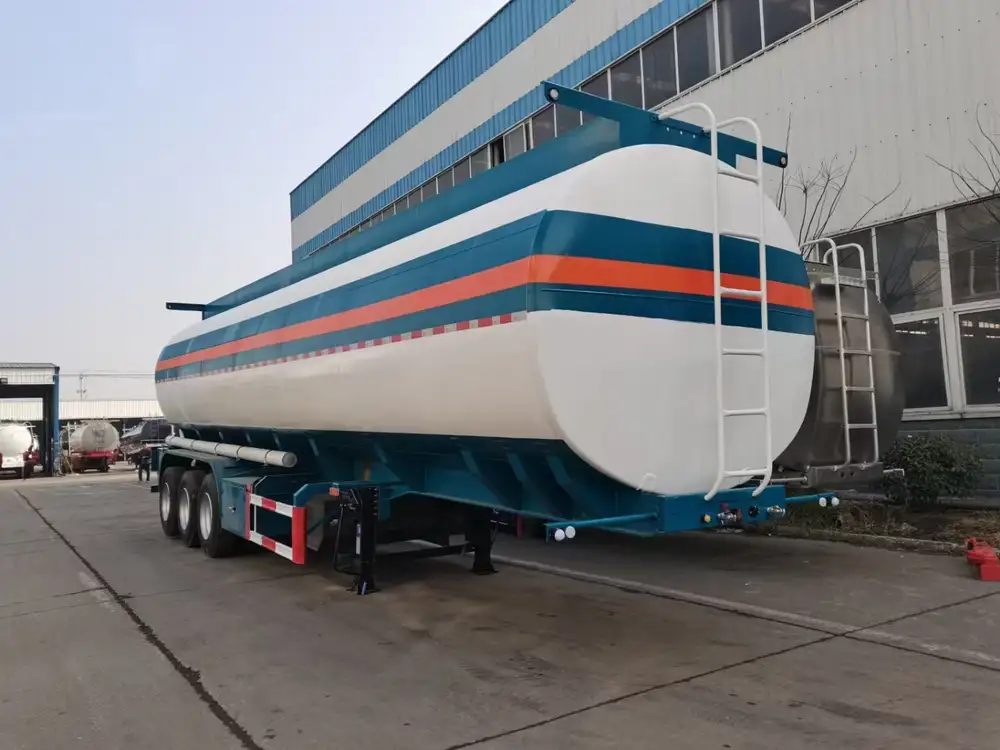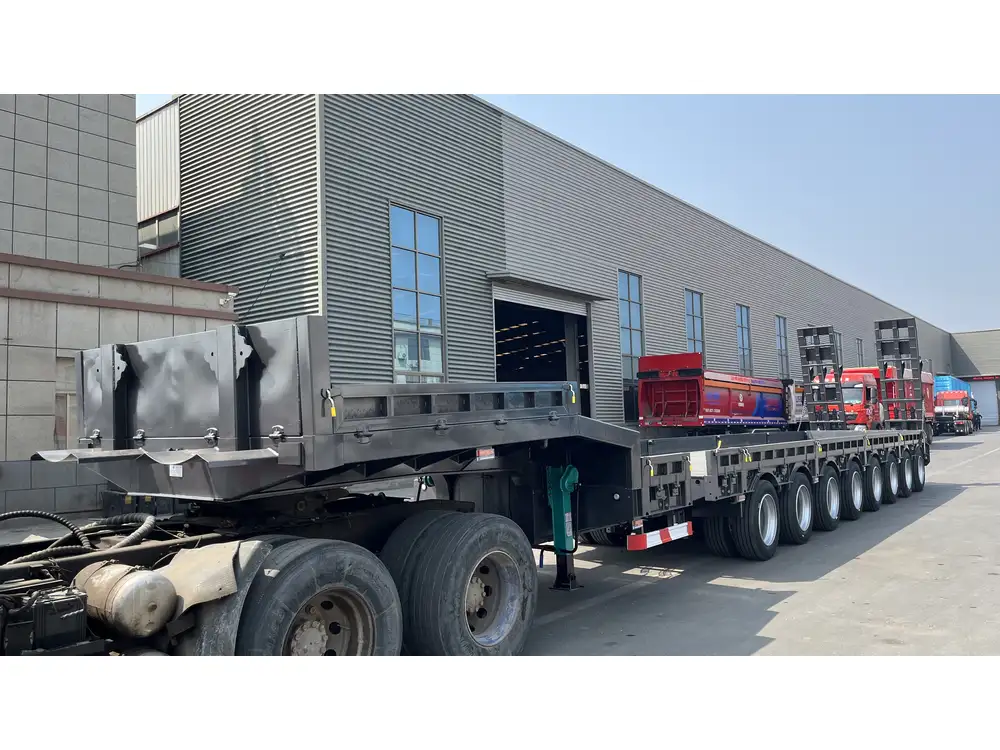In the vast domain of transportation and logistics, the type of trailer utilized can significantly impact efficiency, cost-effectiveness, and overall performance. One such essential tool in this world is the end dump trailer. In this detailed exploration, we dissect everything you need to know about end dump trailers, their features, uses, and the advantages they offer, positioning you to make informed decisions that can bolster your operational efficiency.
What is an End Dump Trailer?
An end dump trailer is a specialized type of trailer designed to transport loose materials such as sand, gravel, dirt, and other bulk items. Unlike traditional dump trailers that unload their cargo by tilting sideways, end dump trailers employ a unique hydraulic mechanism that tilts towards the rear. This allows the contents to be offloaded quickly and effectively.
Key Features of End Dump Trailers
Hydraulic Lifting System: The most distinguishing feature of an end dump trailer is its hydraulic lift. This system gives it a vertical dumping capability, making it an efficient choice for unloading materials in locations where precision is crucial.
Variety of Sizes and Capacities: End dump trailers come in various sizes, usually ranging from 24 to 40 feet in length, with hauling capacities that can exceed 30 tons, making them versatile for different applications.
Durability and Construction: These trailers are often constructed using high-strength steel or aluminum alloys, providing a sturdy structure capable of withstanding heavy loads and harsh conditions. This durability ensures longevity and reliability, two critical factors for businesses in the industry.
Customizable Designs: Many manufacturers allow for custom options, such as additional side extensions, specialized lining for corrosive materials, or specific paint finishes that enhance visibility and safety.

Common Uses of End Dump Trailers
Construction Projects: Frequently employed at construction sites for transporting materials like crushed stone, concrete, and asphalt.
Road Maintenance: Ideal for moving aggregates for road repair and gravel for resurfacing.
Agriculture: Useful for transporting fertilizers, soil amendments, and bulk commodities.
Mining and Excavation: Commonly used in mining operations to haul materials away from extraction areas.
Advantages of Using End Dump Trailers
1. Efficient Loading and Unloading Process
The primary advantage of an end dump trailer lies in its efficiency. The rear dumping mechanism allows operators to unload materials precisely where needed without extensive repositioning. This not only saves time but also minimizes labor costs, making it an economical choice for many businesses.

2. Enhanced Stability
End dump trailers are designed to maintain balance during unloading. Since they dump their contents towards the rear, there’s a reduced chance of tipping over compared to side dump trailers, especially on uneven terrain. This stability is particularly important when dealing with heavy loads.
3. Ease of Use
With the hydraulic lift system, the operation of an end dump trailer becomes straightforward. This ease allows for quick training of personnel, reducing downtime and increasing overall productivity.
4. Versatility Across Industries
The adaptability of end dump trailers means they can serve numerous sectors beyond construction, such as agriculture, mining, and logistics. Their ability to carry a variety of materials enhances their utility and broadens their application spectrum.

Comparing End Dump Trailers with Other Dump Trailers
To provide a clearer understanding of where end dump trailers stand, let’s compare them with other prevalent types of dump trailers:
| Features | End Dump Trailer | Side Dump Trailer | Bottom Dump Trailer |
|---|---|---|---|
| Dumping Orientation | Rear | Side | Bottom |
| Stability during Unloading | High | Moderate | Low (requires stabilization) |
| Loading Simplicity | Simple (forward loading) | Moderate (inverse loading) | Limited (needs proper maneuvering) |
| Versatility | High | Moderate | Moderate |
| Best Use Cases | Bulk materials & construction | Bulk and aggregate movements | Asphalt paving and loose aggregate |
What to Consider When Buying an End Dump Trailer
When considering the acquisition of an end dump trailer, several factors come into play that can shape your buying decision:
1. Payload Capacity
Evaluate the weight and volume of materials you plan to transport. Choosing a trailer that aligns with your operational needs ensures efficiency and compliance with transportation regulations.

2. Material Quality
Opt for trailers constructed with high-strength materials that can endure heavy loads and harsh environments. Investigate the manufacturer’s reputation for using quality materials, as this will influence the trailer’s longevity and performance.
3. Hydraulic System Efficiency
The hydraulic system is pivotal to an end dump trailer’s operation. Assess its reliability, maintenance requirements, and power to ensure consistent performance. Look for trailers with certified hydraulic equipment to minimize service downtime.
4. Regulatory Compliance
Ensure the trailer meets local safety and environmental regulations. This includes weight limits, lighting, braking systems, and proper identification markings.

5. Cost vs. Value
While upfront costs are a vital factor, evaluate the long-term value that the trailer brings to your operation. Consider maintenance costs, fuel efficiency, and potential savings from improved operational efficiency when making your decision.
Maintenance Tips for End Dump Trailers
To maximize the lifespan and performance of an end dump trailer, regular maintenance is essential. Consider the following maintenance practices:
Routine Inspections: Conduct periodic checks to identify wear and tear on the hydraulic system, tires, and trailer body. Early detection can prevent costly repairs down the line.
Hydraulic System Care: Regularly check hydraulic fluid levels and replace filters as needed. Listen for unusual noises during operation, which may indicate underlying issues.
Tire Maintenance: Maintain proper tire pressure to improve performance and extend lifespan. Rotate tires and inspect for uneven wear.
Cleanliness: Regularly clean the trailer, especially after hauling corrosive materials, to prevent deterioration and rust.
Lubrication: Properly grease joints and other movable parts to maintain functionality and prevent premature wear.
The Future of End Dump Trailers: Innovations on the Horizon
The transportation industry is witnessing remarkable innovations driven by technology and changing market demands. Here’s a look at potential advancements that could shape the future of end dump trailers:
Smart Technology Integration: Emerging technologies like telematics could provide real-time data on load weights, route optimization, and maintenance alerts, enhancing operational efficiency.
Lightweight Materials: Advancements in materials science may lead to lighter and stronger trailer constructions, increasing payload capacities without compromising strength.
Eco-Friendly Designs: With growing environmental regulations, manufacturers may produce trailers that are lighter and made from recyclable materials, reducing the carbon footprint of transport operations.
Enhanced Safety Features: Future designs may incorporate advanced braking systems, side cameras, and collision avoidance sensors to enhance safety during operation.

Conclusion
End dump trailers serve as a critical asset in various industries, providing efficiency, stability, and versatility in transporting bulk materials. Understanding their features, advantages, and maintenance needs equips potential buyers with the knowledge to make informed decisions, ultimately enhancing operational capabilities. As the industry progresses, staying abreast of innovations ensures you remain competitive in the rapidly evolving landscape of transportation.



